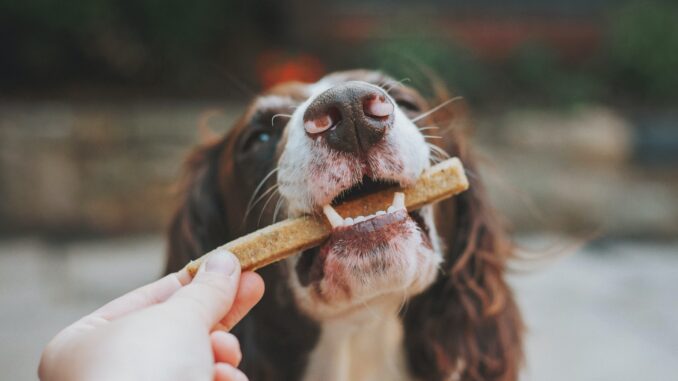
Your pet is an important member of your family, and you want them to behave well. Positive reinforcement is an effective way to train your pet, but it isn’t always easy. The trick is to watch your pet closely. Try to pay attention to the behaviours that you want more of. Once you notice the behaviour you want you can use positive reinforcement to encourage more of it.
Positive reinforcement is an effective way to train your pet, but it isn’t always easy.
Positive reinforcement is a great way to train your pet, but it isn’t always easy. You need to pay attention to what you want more of in your pet’s behaviour and reward that behaviour consistently. If you want your dog to come when called, then every time he does so (even if it’s just once), give him lots of praise and affection as well as treats or toys that he likes best. Animals have short attention spans so don’t wait too long between rewards; otherwise they may forget what they were being rewarded for!
You can also use positive reinforcement when teaching them basic commands such as sit or stay. The key here is consistency: every time they do something correctly (e.g., sit down on command), reward them with praise/affection along with something tasty like peanut butter cookies!
The trick is to watch your pet closely.
The trick is to watch your pet closely. You’ll want to look for the behaviour you want, and then reward it. If your dog sits perfectly still when you say “sit,” give him a treat or play with him in some way (if he doesn’t know how). If your cat rubs against your leg while she’s asleep, wake her up and give her attention (and maybe even a treat!). Your pets may not learn quickly–or at all–but if you’re patient, they will gradually get better at responding to commands from their owners.
Try to pay attention to the behaviors that you want more of.
You’ll want to be patient. It may take time for your pet to learn the behaviour you are trying to reinforce, but don’t give up! Keep a positive attitude and don’t worry if it doesn’t happen right away. If you’re consistent and keep at it, your pet will eventually learn what behaviours you like best and start doing them more often on their own (without being prompted).
Once you notice the behaviour you want you can use positive reinforcement to encourage more of it.
It’s important that the reward be something they like and will enjoy doing again. This might be a treat or toy, but it could also be praise and affection if that’s what works best for your animal friend! It’s important that the reward is not given until after the correct behaviour has been performed so as not to confuse them about what they did right or wrong; otherwise, they may become confused about what exactly needs improving upon next time around (or worse yet–they might get bored).
If done correctly with love and encouragement rather than guilt-trips or punishment tactics then this method really does work wonders with both dogs/cats/lizards etcetera because everyone loves having fun together!
Positive reinforcement works best when your pet knows what they’re getting rewarded for doing, and they understand why they are being rewarded.
When you want to train your dog, or cat, or any other animal with positive reinforcement techniques:
- Make sure that the animal knows that the behavior you want is being rewarded by giving them a treat.
- You can also use praise as a reward if that’s more effective in getting your pet to do what you want them too!
When using positive reinforcement, it’s important not to punish negative behaviors.
When using positive reinforcement, it’s important not to punish negative behaviors. This can be hard for some people because they’re used to discipline and punishment being effective ways of training their pets. But when you use negative reinforcement or punishment, your pet will learn that the only way he can get what he wants is by misbehaving and making bad choices. If you want your dog or cat to behave well, then you need to focus on rewarding good behavior instead of punishing bad behavior.
Using methods like praise and treats can help you train your pets better, but it’s important not to put too much pressure on them or reprimand them harshly when they do wrong.
Another important thing to remember is not to put too much pressure on your pet and reprimand them harshly when they do wrong. It’s important to use positive reinforcement, which means rewarding the pet when they do something right. A dog who has been trained with love and encouragement will be happier and more willing to learn new things than one who has been punished for mistakes in the past.
Remember, positive reinforcement is just one way to train your pet. You can also use negative reinforcement (punishment) or negative punishment (refusal of rewards). The key is to find what works best for both of you!
Leave a Reply